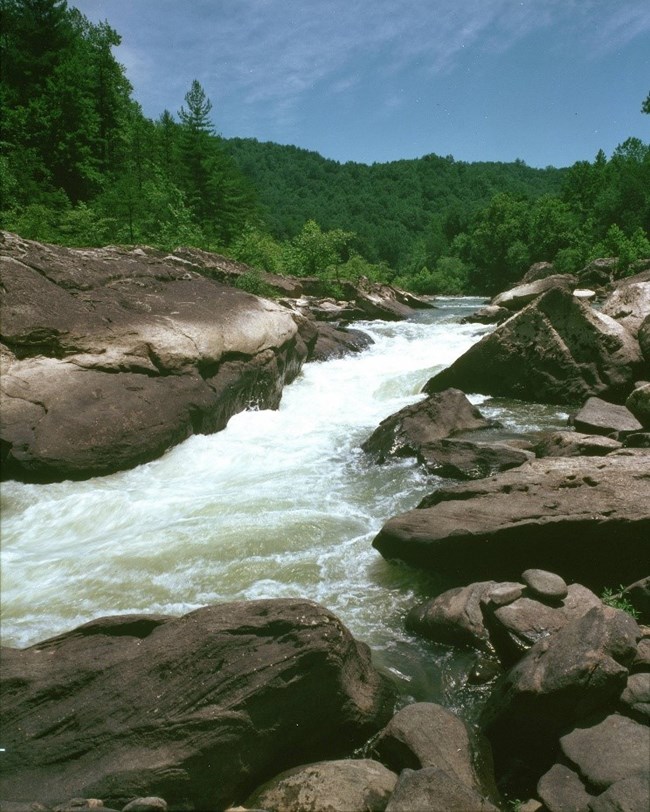Learn about NRCAs
The Natural Resource Condition Assessment (NRCA) Program provides framework, funding, and publishing support to parks to aid in the synthesis and documentation of natural resource conditions. Condition assessment reports are a tool to describe selected park resources, and record a snapshot of their current condition, identify trends, and identify potential or current threats and stressors. Understanding the condition and trend of natural resources is key for parks and NPS planners to appropriately prioritize and allocate stewardship resources.

NPS Photo
Traditional NRCA Report: 2013
In an effort to better understand the natural resources and processes present in this recreation area, a Natural Resource Condition Assessment was conducted, and published in 2013. National Park Service representatives, along with the University of Georgia, collaborated to examine the recreation area’s needs and available data. This team chose to evaluate 13 resource topics:
- Air quality |
- Bird assemblages |
||||||||
- Atmospheric deposition |
- Mammal assemblages |
||||||||
- Visibility and particulate matter |
- Herpetofaunal assemblages |
||||||||
- Weather and climate |
- Freshwater mussel assemblages |
||||||||
- Hydrology and water quality |
- Macroinvertibrate assemblages |
||||||||
- Vegetation |
- Landscape dynamics |
||||||||
- Fish assemblages |
|||||||||
|
|
The assessment of these resource topics showed mixed condition results. The majority of the air quality indicators were given a condition status of moderate concern; the majority of the water quality indicators were given a condition status of moderate concern; the majority of the biological integrity indicators were given a good condition status; and the landscape dynamic indicators were in good condition. There are several threats and stressors present in the recreation area – including decreased air quality and pollutants, exotic and invasive species, decreased water quality, disease, and landscape change – which park resource managers are consistently striving to counteract with stewardship practices.
For other reports and natural resource datasets visit the NPS Data Store.
Source: NPS DataStore Collection 7765 (results presented are a subset). To search for additional information, visit the NPS DataStore.
Last updated: February 25, 2022
